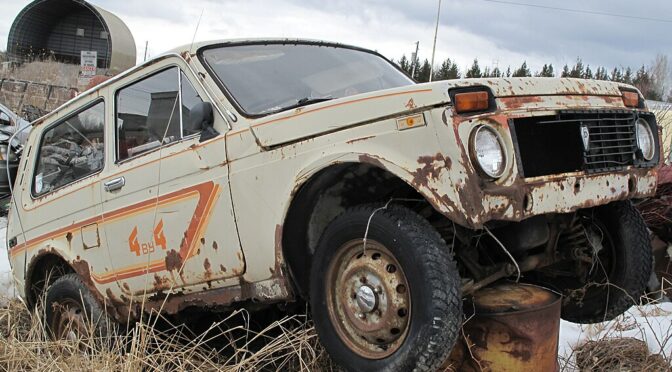Article published in The Daily Telegraph, 4 February 2025. © Richard Kemp
As international car makers like Mercedes, Nissan and Volkswagen pulled out of Russia, President Putin told top businessmen and officials to drive a Lada instead. It looks like he has now given the same orders to his armed forces fighting in Ukraine. According to American journalist David Axe: ‘the Russian military is normalising assaults in civilian cars’. There are many videos on the internet showing Ladas attacking Ukrainian positions, some with military markings and anti-drone grills fitted.
I remember in the Balkan wars how the opposing military factions pressed civilian vehicles into combat and of course Toyota pickups have long been the preferred battle wagons for jihadists across the Middle East and Africa. But why Russia, with the second most powerful armed forces in the world? Oryx, the Dutch open-source analysis website, estimates Putin’s forces have lost more than 15,000 armoured vehicles and heavy combat equipment since the invasion began.
Axe says that, while Russian industry was unable to come anywhere near replacing an annual loss rate of 6,000 combat vehicles, until recent months it was able to make up the shortfall by fielding aged equipment from Cold War long-term storage parks. The state of those vehicles can only be imagined. I recall seeing rusting tanks and infantry fighting vehicles at Russian bases in East Germany at the height of the Cold War – and they were supposed to be ready to roll across the inner German border at a few hours’ notice. In any case, stocks of what remain of them now appear to be running low, hence the apparently common use of Lada assaults.
Imagine how it must feel for a young Russian soldier driving into the teeth of Ukrainian artillery, anti-tank missiles, drone swarms and land-mines jammed inside a family car. Not to mention rifles and machine guns that would have no problem tearing through the Lada’s paper-thin steel shell. I took part in the invasion of Iraq in 1991 in a Challenger tank. Despite being encased in state-of-the-art Chobham armour, we felt far from invulnerable, although we had air supremacy and our Challengers seriously outgunned the Iraqis’ obsolete Russian tanks.
Even Russia, with its vast population, cannot afford to keep throwing away its soldiers’ lives, so the use of Ladas has to be a last resort. Despite Moscow’s steady advance further into Ukrainian territory, the shortage of combat resources this indicates must be influencing Putin’s apparent desire for a ceasefire, even if only to draw breath while his forces re-arm.
We might well scoff at the Russians’ growing dependence on Ladas. But remember how at the height of the Global War on Terrorism we sent our own troops into action in unarmoured Landrover Snatch death-traps, vulnerable to land-mines, improvised explosive devices and any other weapons the jihadists decided to fire at them. They had been useful for patrolling and riot control in the most benign areas of Northern Ireland, but in Iraq and Afghanistan provided no more protection than a Lada. It took the Ministry of Defence’s Byzantine procurement system nine years and dozens of dead and wounded soldiers to field a half-decent replacement vehicle.
That’s because, while our troops were fighting two intensive wars, the home front was still working on a peace-time footing. The situation is even worse today. Our Armed Forces continue to be run down in the face of the largest war in Europe since 1945. We claim to be able to deploy a single armoured division, compared to three divisions during the Cold War. But even from those, we were only able to cobble together one under-sized division for the 1991 Gulf War. Our efforts to support Kyiv have again exposed the alarming state of our ammunition stocks, armoured vehicle numbers and the spares to keep them running. Last year the House of Commons Defence Committee warned that, fighting in a Ukraine-type war, the Army would exhaust its capabilities within just two months. That may be optimistic. Both Russian and Ukrainian vehicle attrition rates, not to mention casualty statistics, should be keeping our defence planners awake all night every night.
Putin’s Lada assaults may show his forces have been to some extent blunted, but they will not stay blunt. Moreover, unless significant impetus and financial resources are ploughed rapidly into our defences, neither he nor any other potential enemies will have much to fear from our Armed Forces.
Image: Wikimedia Commons

